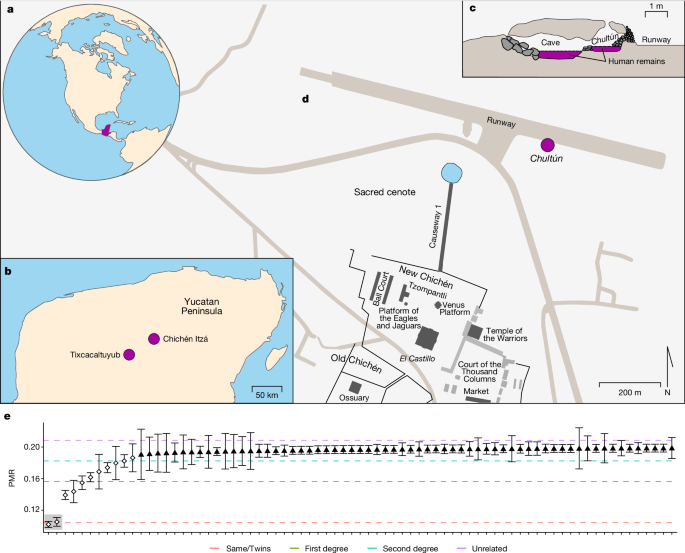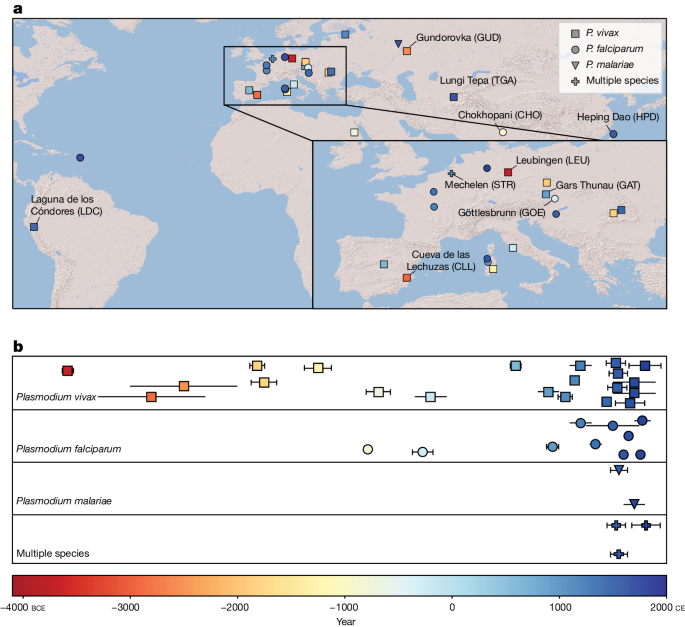2024-06-12 マックス・プランク研究所
<関連情報>
- https://www.mpg.de/22037367/0606-evan-ancient-maya-genomes-150495-x?c=2249
- https://www.nature.com/articles/s41586-024-07509-7
古代のゲノムからチチェン・イッツァの儀式生活への洞察が得られる Ancient genomes reveal insights into ritual life at Chichén Itzá
Rodrigo Barquera,Oana Del Castillo-Chávez,Kathrin Nägele,Patxi Pérez-Ramallo,Diana Iraíz Hernández-Zaragoza,András Szolek,Adam Benjamin Rohrlach,Pablo Librado,Ainash Childebayeva,Raffaela Angelina Bianco,Bridget S. Penman,Victor Acuña-Alonzo,Mary Lucas,Julio César Lara-Riegos,María Ermila Moo-Mezeta,Julio César Torres-Romero,Patrick Roberts,Oliver Kohlbacher,Christina Warinner & Johannes Krause
Nature Published:12 June 2024
DOI:https://doi.org/10.1038/s41586-024-07509-7

Abstract
The ancient city of Chichén Itzá in Yucatán, Mexico, was one of the largest and most influential Maya settlements during the Late and Terminal Classic periods (AD 600–1000) and it remains one of the most intensively studied archaeological sites in Mesoamerica. However, many questions about the social and cultural use of its ceremonial spaces, as well as its population’s genetic ties to other Mesoamerican groups, remain unanswered. Here we present genome-wide data obtained from 64 subadult individuals dating to around AD 500–900 that were found in a subterranean mass burial near the Sacred Cenote (sinkhole) in the ceremonial centre of Chichén Itzá. Genetic analyses showed that all analysed individuals were male and several individuals were closely related, including two pairs of monozygotic twins. Twins feature prominently in Mayan and broader Mesoamerican mythology, where they embody qualities of duality among deities and heroes, but until now they had not been identified in ancient Mayan mortuary contexts. Genetic comparison to present-day people in the region shows genetic continuity with the ancient inhabitants of Chichén Itzá, except at certain genetic loci related to human immunity, including the human leukocyte antigen complex, suggesting signals of adaptation due to infectious diseases introduced to the region during the colonial period.


